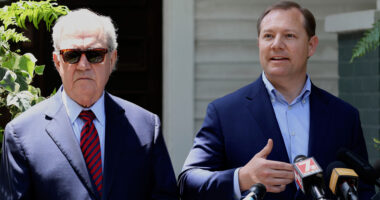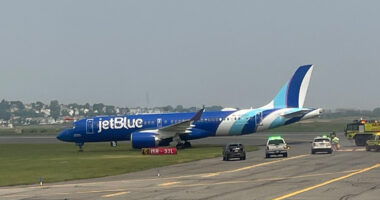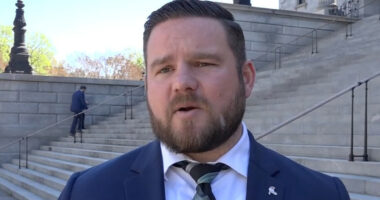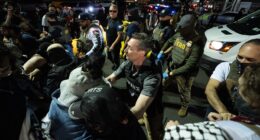The incredible moment occurred when a young child managed to escape from his confinement within the confines of the Saydnaya military prison in Syria, a location that has earned the reputation of being the “industrial torture chamber” under the control of Bashar al-Assad’s government.
Upon exiting his cell, the child was met with exuberant shouts of “Allahu Akbar” – an Arabic phrase meaning “God is greatest” – as rebel fighters celebrated their successful raid on the prison located in close proximity to the capital city of Damascus, liberating numerous female prisoners in the process.


Saydnaya prison, notorious for its systemic torture and mass executions, symbolised the Assad regime’s brutal reign.
Amnesty International reports estimated that between 5,000 and 13,000 prisoners were hanged there since 2011.
Inside the prison walls, inmates had to endure inhumane conditions for an extended period, a strategy employed by the regime to instill fear by confining women and children alongside individuals detained for political reasons.
Footage shared on social media captured the heart-rending scene.
Women wept with joy and children clung to newly freed relatives as rebels cut through padlocks and swung open cell doors.
The toddler, hesitating at the threshold of his cell, became an emblem of innocence in a place synonymous with horror.
Rebel fighters ushered survivors into waiting buses, which transported them to safety and reunion with loved ones.
“We celebrate with the Syrian people the news of freeing our prisoners,” a rebel spokesperson declared.
“This marks the end of the era of injustice in Saydnaya prison.”
The prison’s liberation comes amid a cascade of events that are toppling Assad’s 24-year rule.
After seizing Damascus in a swift and decisive offensive, rebel forces declared victory and announced that the city was “free of Assad.”
The dictator fled the capital on Sunday, reportedly aboard a plane that disappeared from radars.
It is understood he has sought refuge in Moscow and is currently under Russian protection.
The collapse of Assad’s regime ignited celebrations across Syria.
In the capital, thousands poured into the streets, waving rebel flags and lighting flares.
Statues of Assad and his late father, Hafez, were toppled in symbolic acts of defiance.
At Assad’s presidential palace, rebels filmed themselves looting valuables, including luxury vehicles and designer goods.
While Damascus rejoiced, chaos unfolded in the wake of the regime’s collapse.



Rebels stormed embassies, including those of Iran and Italy, looting property and forcing evacuations.
Assad loyalists who had not fled were paraded through the streets under armed guard.
The broader conflict, however, remains complex.
While the fall of Assad is celebrated, Syria is still fractured.
Rebel leader Abu Mohammed al-Golani, a controversial figure, has vowed inclusivity, stating that “Syria is for everyone, no exceptions.”
Yet, tensions persist among various factions, with Turkish-backed forces clashing with Kurdish groups in the north, and ISIS maintaining a foothold in remote areas.
The rebels face the monumental task of rebuilding a nation shattered by 13 years of war.
An estimated half a million Syrians have died, and millions more have been displaced.
Rebel leaders have pledged to establish a transitional government and rebuild the country on principles of democracy and pluralism.
International reactions to Assad’s fall are mixed.
Israel has conducted airstrikes on suspected chemical weapon sites in Syria, and Russian military bases in the country are on high alert.
Meanwhile, US President-elect Donald Trump has also stated that America should remain uninvolved in the uprising.



















